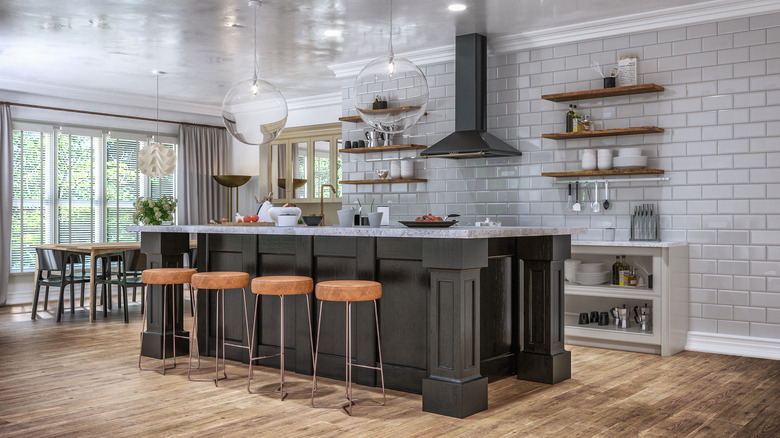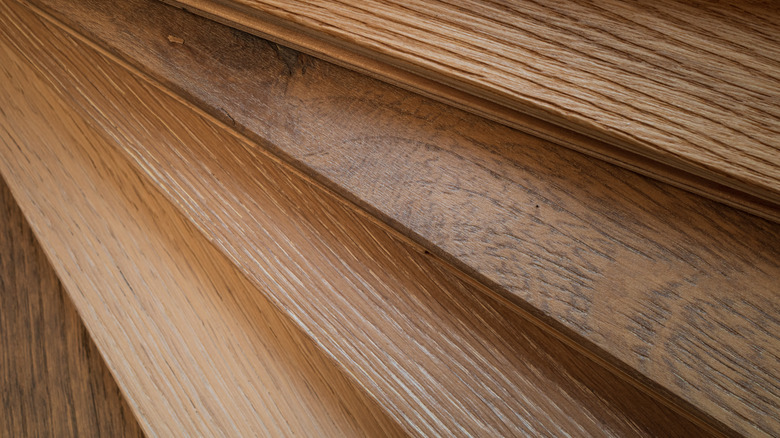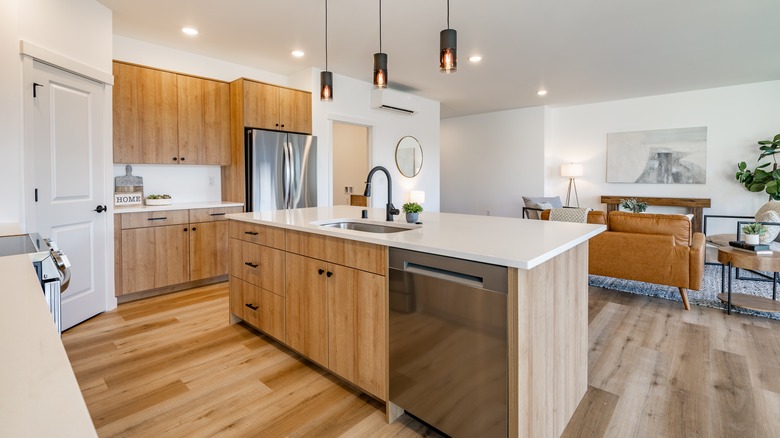Say Goodbye To Traditional Hardwood Floors: This Kitchen Trend Is Taking Over
Hardwood flooring continues to dominate the world of interior design. The National Kitchen and Bath Association conducted a survey that included opinions from more than 600 industry professionals. According to this 2026 trends report, hardwood flooring is the most popular choice for kitchens, and for good reasons. Beautiful natural wood grain of any variety is a timeless look that's adaptable to virtually any design style. Homeowners won't be ditching the look any time soon, but experts predict they will turn to a modern alternative to traditional hardwood.
Almost 80 percent of survey respondents predict that engineered wood will trend next year. This layered flooring is a long-lasting alternative that offers the appearance of hardwood but with enhanced durability and lower maintenance needs. Homeowners are choosing engineered wood in wide planks with minimal grout lines, mirroring the sleek backsplashes that are also predicted to trend. The survey also notes that lighter, warm neutral-toned wood, such as oak, will be popular in 2026.
A stylish kitchen solution
The kitchen is believed to be the heart of the home, the main gathering place for family and friends. Trendy coffee bars, pet feeding stations, and attached mud rooms are becoming must-have kitchen features and engineered wood would be durable enough to withstand this extra foot (and paw) traffic. The level of durability of this type of wood is dependent on the thickness of the wear layer, or the top layer. If your kitchen is a high-traffic area, a wear layer at least 3 millimeters thick would be best. This level of thickness means it can also be refinished multiple times to maintain the appearance and keep up with trends.
Cost is an important consideration in any home upgrade. Engineered wood is in the mid-range of flooring prices. While it is more expensive than vinyl and laminate flooring, engineered wood is more cost effective than hardwood. Depending on the finish, wood species, and thickness of the veneer, you can expect to pay $4.50 to $16 per square foot.
Installation and maintenance
Engineered wood floors can be installed via several methods. Planks can be glued down to the subfloor, which is ideal for homes with concrete subflooring that get a lot of foot traffic. You can also nail it down, using a pneumatic flooring nailer to secure planks to a wood subfloor. This would not be suitable for concrete subflooring. Click-lock installation, also called a floating floor system, is a versatile, DIY-friendly method. It uses planks specifically designed to lock together like puzzle pieces. These planks can be installed over a variety of subfloors without the need for nails or glue. Whichever method of installation you choose, don't forget to factor in the cost of materials. Professional installation is also an option to consider.
With proper care and maintenance, engineered wood floors can last 20 to 30 years. The level of maintenance required for these floors depends on several factors, like the type of wood veneer, the quality of the finish, and the thickness of the wear layer. Certain woods, like pine, are softer than others and more prone to scratches. Routine maintenance, like sweeping and mopping, will go a long way in preserving the beauty and longevity of your floors. Microfiber cloth and wood floor-specific cleaners are much gentler on engineered wood than other materials and will keep your floors looking like new.


